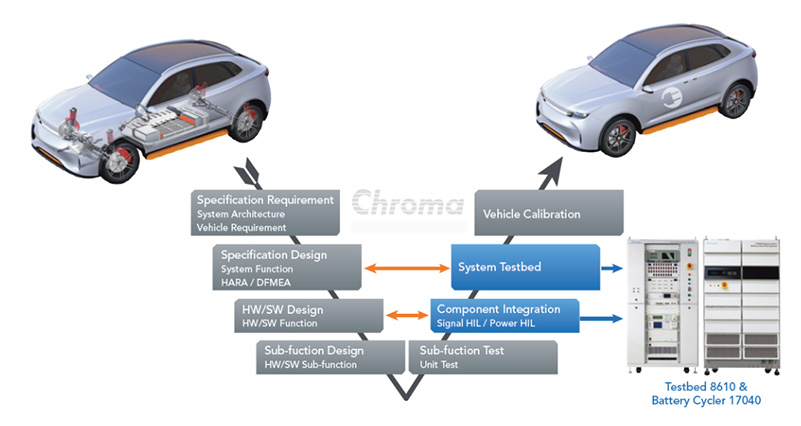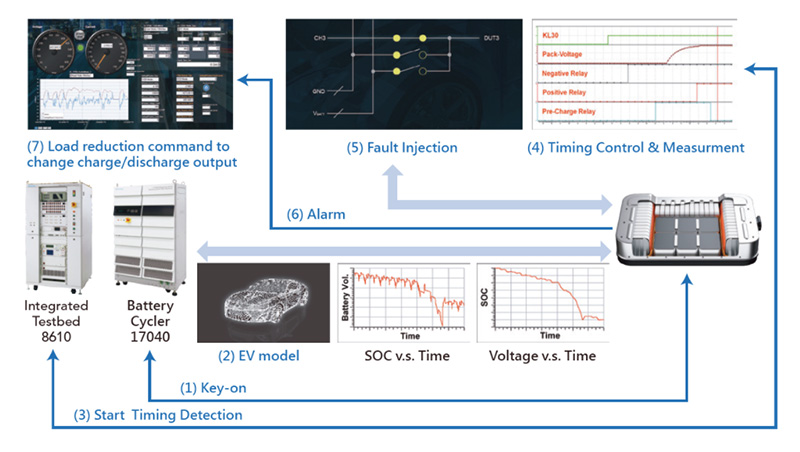The battery pack is the most important component of EVs and its verification takes automotive OEMs much effort. However, the battery pack keeps causing the most potential problems. Most test systems for battery packs, so far, mainly perform a charge/discharge life test. Some advanced ones are equipped with BMS communication to simulate the battery pack’s response under different conditions. Still, this is far off from the actual operation of the battery pack in real vehicles.
Following the ISO 26262 requirements for functional safety testing of road vehicles, the developing trend of EV battery systems and their components is that battery modules, battery management systems, cooling/heating systems, and other related parts must go through more verification at the right end of the standard V-shaped process. This includes the testing of battery pack components’ integration into system-level functions and other compound conditions. Users can then discover and correct problems early, before entering real vehicle tests, and so reduce development costs and improve test efficiency.

Chroma ATE launches the new Battery Pack Integrated Testbed Chroma 8610, specifically for the development and application of battery packs, battery modules, and related parts. The 8610 integrates hardware such as a DC power supply, battery charger/discharge system, digital meter, and Hi-Pot equipment. Its open architecture provides a highly flexible and powerful user interface.
The 8610 system can import predefined endurance driving cycles of various international standards (NEDC, EPA, etc.) to perform the battery packs’ dynamic test functionality while simulating actual vehicle conditions; can perform fault injections to each control signal of the battery pack (CAN, Interlock, etc.); can simulate various operation (GB standard) tests between EVSE and battery packs; and can conduct resistance and leakage current measurements during various tests, ensuring that the battery pack is in normal condition. These test items can be flexibly arranged and combined. You can so verify the most complex scenarios of a real vehicle and composite operation conditions with the highest risk of failure, and carry out more in-depth tests on the battery pack without the need of the actual vehicles.
The auxiliary Chroma 17040 battery charger/discharger simulates discharging and regeneration by the powertrain system. The interface supports the adoption of Altair Activate vehicle models and various Simulink model-based real-time models. Through NEDC, WLTP and other international standard driving cycles, it can test dynamic charging/discharging performance for the vehicle as a whole.

As the automotive industry endeavors to electric drive conversion and battery control technologies, Chroma ATE is committed to improving the performance of electric vehicles (xEV), from R&D to mass productions and from complete vehicles to car parts, by developing flexible power conversion testbeds and regenerative battery test systems. Chroma will continue to provide customers with various testing solutions and to expand the horizon on electric vehicle testing.
